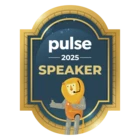I collected some strong advice from seasoned Gainsight admins about what to put in a great CTA Playbook, and it resonates so strongly with me.
Let’s start with an an example of an obvious type of Playbook that’s unfortunately a poor approach. 🙅
- Email customer
- Send follow up email if not responded
- Schedule call
- Hold call
- Send follow up email from call
Your goal is to help a CSM feel that they are confidently walking a dependable path to help their customer, and doing what leadership expects of them in their job. (Not to mention that they also get to feel that they’re taking the best steps towards maximizing their variable comp based on GRR or NRR.)
What do CSMs need in order to feel that gut-level confidence?
- Focus the Playbook Tasks on outcomes -- the intermediate milestones towards the resolution of the risk.
- Avoid lists of internally-focused to-dos to execute (like the example above) -- keep the Tasks customer-centric.
- Process details can go in the Description of a Task, but they’re not the purpose of the Task, and its purpose should be its title.
- This means that the sweet-spot is usually 3-5 Tasks -- any more and things get messy.
- Be specific about what you mean about the Task’s intent.
- ...but that’s not to say that the Playbook should detail an inflexible process. Each Task should require critical thinking and skill in the exact way to satisfy its goal.
- Include links to enablement documentation (in the Description of the Task).
- Include email templates (when a Task involves emailing a contact).
- If escalation is likely to be needed, include a description of the escalation process for that type of risk/situation.
Think of Playbook Tasks like sales stages of an opportunity: time-tested, clearly defined, flexible to execute, and so on. The difference is that you’re enhancing each of them with specific tools (email templates, etc.).
Bonus: Use Playbooks to Earn Your CSMs’ Love!
To ensure your Playbooks are top-notch (spoiler alert: they will constantly deserve tweaks), use a feedback process with your CSMs so they feel agency in using their front-line experience with customers to craft what’s expected of them. Feedback processes could be, for example:
- A quarterly advisory group
- A Gainsight-focused Slack channel
- An always-available feedback form
- Reviewing all input with leadership, and then closing the loop with CSMs
CSMs should follow the best practices, but also be empowered to shape to those best practices with their expertise.
👏 👏 👏
Direct your thanks and credit to

